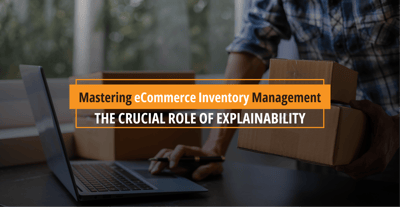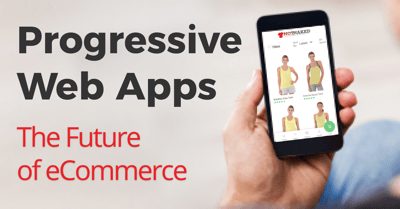Headquarters
175 S Main St Suite 1310,
Salt Lake City, UT 84111

Nobody likes waiting in line—and the data backs that up. Research shows that 32% of shoppers will abandon a long checkout line and look for a more convenient shopping experience elsewhere. While some may opt to order online instead, many others will simply walk away from their purchase entirely and head to a competitor. This means that all the time, money, and resources you’ve invested in product development and customer acquisition are at risk of being wasted.
To prevent this all-too-common scenario at your brick-and-mortar locations, it’s time to rethink your omnichannel strategy. Leading retail brands worldwide are embracing mobile checkout to enhance the shopping experience, empower store associates, and boost in-store conversions. In this blog, we explore how mobile checkout can transform your retail operations and deliver significant benefits for your business and your customers.
Mobile checkout has rapidly gained popularity in retail, driven by the growing demand for convenience and speed. Consumers today expect a seamless, fast shopping experience, and mobile checkout delivers just that. By enabling shoppers to complete transactions directly on their smartphones, it eliminates the frustration of long lines and enhances the overall store experience. This technology not only benefits customers but also empowers store associates by allowing them to assist with purchases anywhere on the sales floor, making service more personalized and efficient.
With the rise of mobile payment solutions and the increasing adoption of mobile devices, mobile checkout has become a key feature in omnichannel strategies. Retailers are seeing it as a way to increase customer satisfaction, reduce friction in the buying process, and improve in-store conversion rates. As more shoppers demand a frictionless shopping journey, mobile checkout is quickly becoming a must-have tool for retailers looking to stay competitive.
To further explore the benefits of mobile checkout, let’s dive into the key advantages it brings to your business:
In-store mobile checkout is gaining traction due to the growing demand for speed and convenience in the retail experience. Retailers like Walmart and Target were early adopters, recognizing that a smoother, faster checkout process is essential for keeping customers engaged. Studies indicate that shoppers are increasingly impatient with long lines. In fact, 40% of U.S. shoppers will abandon their purchase if they are forced to wait longer than 5 minutes in line.This trend underscores the importance of mobile checkout as a way to meet modern shopping expectations.
Mobile checkout solutions come in various forms, whether it's a store associate using a mobile point of sale (mPOS) system or allowing customers to self-checkout via their smartphones. mPOS systems give store associates instant access to customer profiles, loyalty programs, and global inventory, enabling them to deliver personalized service and even complete transactions from anywhere on the floor. On the other hand, mobile self-checkout provides customers with the freedom to complete their purchase independently, reducing wait times and staffing costs.
The shift toward mobile checkout is not just about improving the shopping experience; it's also about keeping up with the competitive retail landscape. As in-store sales face pressure, brands that leverage mobile technology are seeing the benefit of higher conversion rates, improved customer satisfaction, and more efficient store operations. If your brand hasn't adopted mobile checkout yet, it's time to reconsider your approach to in-store sales before your competitors do.
The impact of in-store mobile checkout extends beyond just improving the customer experience—it significantly enhances employee utilization and overall store performance. Traditionally, store associates spend a significant portion of their time behind the checkout counter, handling transactions and bagging products. With mobile checkout, employees are no longer tied to the counter, allowing them to engage more with customers, provide personalized service, and even up-sell products.
Studies show that 79% of consumers consider personalized service from a sales associate a critical factor in their shopping decisions. With the flexibility to assist customers throughout the store, associates can actively contribute to the omnichannel shopping experience, fostering stronger relationships with shoppers. This ability to spend more time helping customers means they are not just completing transactions—they are becoming trusted advisors who influence purchasing decisions and enhance customer loyalty.
By enabling employees to assist customers in a more meaningful way, mobile checkout creates an environment where staff can add value beyond just processing payments. Customers will begin to see employees as genuine people, not just salespeople, fostering more authentic and engaging conversations. This personal connection allows staff to focus on understanding the customer’s needs, rather than simply pushing a sale.
This not only improves the customer experience but also leads to higher conversion rates and greater customer satisfaction. If your store is still using traditional checkout methods, it's time to rethink how you can better empower your associates to drive sales and enhance the customer journey.
When a customer walks out of your store without making a purchase due to a long checkout line, you’re not just losing a sale—you’re also losing valuable customer data. While mobile commerce apps can still track a customer’s behavior, traditional in-store checkouts often don’t provide the same visibility. Without capturing basic details like name or email, or if the customer doesn’t have an account with your brand, all you're left with is the sale amount as a data point.
Imagine the missed opportunities to understand customer preferences, buying patterns, and potential for future engagement. Mobile point of sale (mPOS) solutions can change that by allowing associates to scan product barcodes throughout the shopping journey. This provides detailed insights into the products customers are interested in, even if they don’t make a purchase. The data collected through mPOS is comparable to the analytics you gather from online shopping behaviors, offering your marketing, sales, and product teams valuable information.
This data helps teams improve product assortments, fine-tune marketing campaigns, and personalize promotions or recommendations. By capturing key insights from the in-store experience, you can not only drive sales but also enhance future strategies and customer engagement. In an era where data-driven decisions are paramount, mobile checkout solutions give you a critical edge in capturing that data and turning it into actionable insights.
* * *
Mobile checkout is revolutionizing in-store shopping, offering customers a seamless, cashless experience and reducing long wait times. However, to truly enhance the customer journey, retailers need a unified approach that connects in-store and online experiences.
Shopify offers a Mobile POS solution that simplifies mobile checkout for retailers. When combined with HotWax Commerce's OMS, this integration ensures real-time inventory availability across all channels and supports solutions like BOPIS and Ship from Store, enabling a truly unified shopping experience.
A robust omnichannel strategy is key to delivering a seamless shopping experience across all touchpoints, from mobile checkout to online purchasing and everything in between.
Reach out to the HotWax Commerce team for a consultation, and let us guide you through our best-in-class solutions designed to enhance your operations and ensure success.






